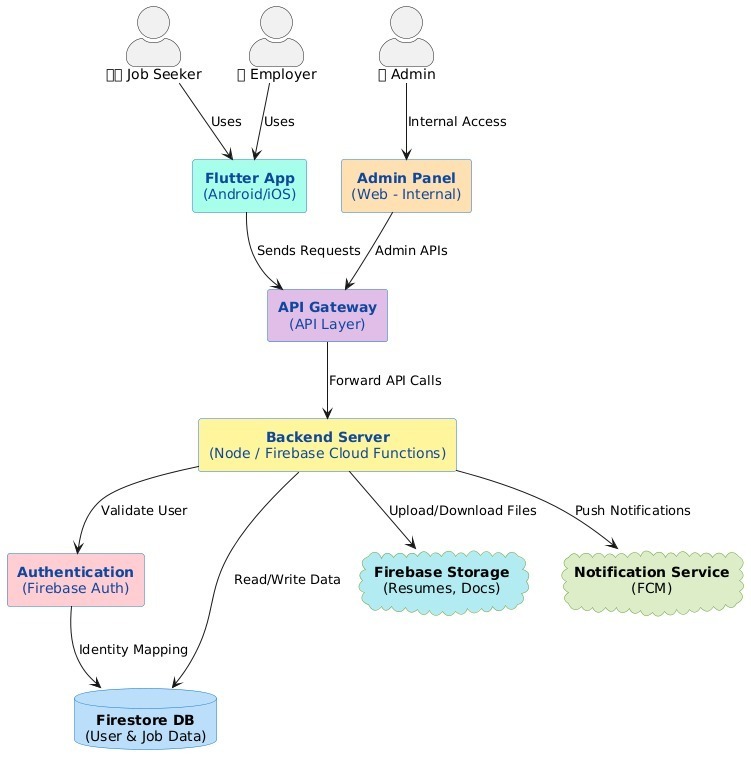Exhaustive Guide to Generative and Predictive AI in AppSec
AI is redefining the field of application security by facilitating heightened bug discovery, automated assessments, and even semi-autonomous threat hunting. This guide provides an comprehensive narrative on how generative and predictive AI are being applied in AppSec, designed for security professionals and executives in tandem. We’ll examine the growth of AI-driven application defense, its current features, obstacles, the rise of agent-based AI systems, and future trends. Let’s begin our exploration through the foundations, current landscape, and prospects of artificially intelligent application security. Origin and Growth of AI-Enhanced AppSec Foundations of Automated Vulnerability Discovery Long before machine learning became a trendy topic, infosec experts sought to streamline bug detection. In the late 1980s, Dr. Barton Miller’s trailblazing work on fuzz testing showed the impact of automation. His 1988 research experiment randomly generated inputs to crash UNIX programs — “fuzzing” exposed that roughly a quarter to a third of utility programs could be crashed with random data. This straightforward black-box approach paved the groundwork for later security testing techniques. By the 1990s and early 2000s, engineers employed automation scripts and scanning applications to find common flaws. Early static analysis tools operated like advanced grep, inspecting code for dangerous functions or embedded secrets. Though these pattern-matching methods were beneficial, they often yielded many spurious alerts, because any code matching a pattern was flagged without considering context. Evolution of AI-Driven Security Models From the mid-2000s to the 2010s, scholarly endeavors and corporate solutions grew, shifting from static rules to context-aware interpretation. Data-driven algorithms incrementally infiltrated into the application security realm. Early examples included neural networks for anomaly detection in network flows, and probabilistic models for spam or phishing — not strictly application security, but indicative of the trend. Meanwhile, code scanning tools evolved with data flow analysis and execution path mapping to monitor how data moved through an software system. A key concept that emerged was the Code Property Graph (CPG), merging structural, control flow, and information flow into a comprehensive graph. This approach allowed more meaningful vulnerability analysis and later won an IEEE “Test of Time” recognition. By capturing program logic as nodes and edges, analysis platforms could identify complex flaws beyond simple keyword matches. In 2016, DARPA’s Cyber Grand Challenge exhibited fully automated hacking machines — designed to find, prove, and patch security holes in real time, minus human intervention. The top performer, “Mayhem,” combined advanced analysis, symbolic execution, and some AI planning to compete against human hackers. This event was a landmark moment in self-governing cyber security. Significant Milestones of AI-Driven Bug Hunting With the rise of better ML techniques and more labeled examples, machine learning for security has soared. Large tech firms and startups alike have achieved milestones. One substantial leap involves machine learning models predicting software vulnerabilities and exploits. An example is the Exploit Prediction Scoring System (EPSS), which uses a vast number of factors to predict which CVEs will get targeted in the wild. This approach helps infosec practitioners focus on the most critical weaknesses. In code analysis, deep learning networks have been supplied with enormous codebases to spot insecure structures. Microsoft, Big Tech, and additional entities have shown that generative LLMs (Large Language Models) boost security tasks by writing fuzz harnesses. For instance, Google’s security team leveraged LLMs to produce test harnesses for OSS libraries, increasing coverage and finding more bugs with less human effort. Current AI Capabilities in AppSec Today’s software defense leverages AI in two primary ways: generative AI, producing new artifacts (like tests, code, or exploits), and predictive AI, evaluating data to pinpoint or anticipate vulnerabilities. These capabilities cover every phase of the security lifecycle, from code analysis to dynamic assessment. How Generative AI Powers Fuzzing & Exploits Generative AI creates new data, such as attacks or code segments that uncover vulnerabilities. This is visible in machine learning-based fuzzers. Traditional fuzzing derives from random or mutational payloads, while generative models can create more strategic tests. Google’s OSS-Fuzz team experimented with LLMs to auto-generate fuzz coverage for open-source repositories, boosting bug detection. In the same vein, generative AI can help in building exploit scripts. Researchers cautiously demonstrate that LLMs empower the creation of proof-of-concept code once a vulnerability is known. On the offensive side, red teams may leverage gen

AI is redefining the field of application security by facilitating heightened bug discovery, automated assessments, and even semi-autonomous threat hunting. This guide provides an comprehensive narrative on how generative and predictive AI are being applied in AppSec, designed for security professionals and executives in tandem. We’ll examine the growth of AI-driven application defense, its current features, obstacles, the rise of agent-based AI systems, and future trends. Let’s begin our exploration through the foundations, current landscape, and prospects of artificially intelligent application security.
Origin and Growth of AI-Enhanced AppSec
Foundations of Automated Vulnerability Discovery
Long before machine learning became a trendy topic, infosec experts sought to streamline bug detection. In the late 1980s, Dr. Barton Miller’s trailblazing work on fuzz testing showed the impact of automation. His 1988 research experiment randomly generated inputs to crash UNIX programs — “fuzzing” exposed that roughly a quarter to a third of utility programs could be crashed with random data. This straightforward black-box approach paved the groundwork for later security testing techniques. By the 1990s and early 2000s, engineers employed automation scripts and scanning applications to find common flaws. Early static analysis tools operated like advanced grep, inspecting code for dangerous functions or embedded secrets. Though these pattern-matching methods were beneficial, they often yielded many spurious alerts, because any code matching a pattern was flagged without considering context.
Evolution of AI-Driven Security Models
From the mid-2000s to the 2010s, scholarly endeavors and corporate solutions grew, shifting from static rules to context-aware interpretation. Data-driven algorithms incrementally infiltrated into the application security realm. Early examples included neural networks for anomaly detection in network flows, and probabilistic models for spam or phishing — not strictly application security, but indicative of the trend. Meanwhile, code scanning tools evolved with data flow analysis and execution path mapping to monitor how data moved through an software system.
A key concept that emerged was the Code Property Graph (CPG), merging structural, control flow, and information flow into a comprehensive graph. This approach allowed more meaningful vulnerability analysis and later won an IEEE “Test of Time” recognition. By capturing program logic as nodes and edges, analysis platforms could identify complex flaws beyond simple keyword matches.
In 2016, DARPA’s Cyber Grand Challenge exhibited fully automated hacking machines — designed to find, prove, and patch security holes in real time, minus human intervention. The top performer, “Mayhem,” combined advanced analysis, symbolic execution, and some AI planning to compete against human hackers. This event was a landmark moment in self-governing cyber security.
Significant Milestones of AI-Driven Bug Hunting
With the rise of better ML techniques and more labeled examples, machine learning for security has soared. Large tech firms and startups alike have achieved milestones. One substantial leap involves machine learning models predicting software vulnerabilities and exploits. An example is the Exploit Prediction Scoring System (EPSS), which uses a vast number of factors to predict which CVEs will get targeted in the wild. This approach helps infosec practitioners focus on the most critical weaknesses.
In code analysis, deep learning networks have been supplied with enormous codebases to spot insecure structures. Microsoft, Big Tech, and additional entities have shown that generative LLMs (Large Language Models) boost security tasks by writing fuzz harnesses. For instance, Google’s security team leveraged LLMs to produce test harnesses for OSS libraries, increasing coverage and finding more bugs with less human effort.
Current AI Capabilities in AppSec
Today’s software defense leverages AI in two primary ways: generative AI, producing new artifacts (like tests, code, or exploits), and predictive AI, evaluating data to pinpoint or anticipate vulnerabilities. These capabilities cover every phase of the security lifecycle, from code analysis to dynamic assessment.
How Generative AI Powers Fuzzing & Exploits
Generative AI creates new data, such as attacks or code segments that uncover vulnerabilities. This is visible in machine learning-based fuzzers. Traditional fuzzing derives from random or mutational payloads, while generative models can create more strategic tests. Google’s OSS-Fuzz team experimented with LLMs to auto-generate fuzz coverage for open-source repositories, boosting bug detection.
In the same vein, generative AI can help in building exploit scripts. Researchers cautiously demonstrate that LLMs empower the creation of proof-of-concept code once a vulnerability is known. On the offensive side, red teams may leverage generative AI to automate malicious tasks. From a security standpoint, companies use AI-driven exploit generation to better harden systems and create patches.
Predictive AI for Vulnerability Detection and Risk Assessment
Predictive AI scrutinizes data sets to spot likely security weaknesses. Unlike manual rules or signatures, a model can acquire knowledge from thousands of vulnerable vs. safe code examples, noticing patterns that a rule-based system could miss. This approach helps label suspicious patterns and predict the exploitability of newly found issues.
Prioritizing flaws is a second predictive AI benefit. The Exploit Prediction Scoring System is one example where a machine learning model ranks known vulnerabilities by the chance they’ll be leveraged in the wild. This allows security professionals zero in on the top 5% of vulnerabilities that represent the greatest risk. Some modern AppSec platforms feed pull requests and historical bug data into ML models, forecasting which areas of an product are most prone to new flaws.
Machine Learning Enhancements for AppSec Testing
Classic static scanners, dynamic application security testing (DAST), and IAST solutions are increasingly integrating AI to upgrade speed and precision.
SAST scans binaries for security defects without running, but often yields a slew of spurious warnings if it cannot interpret usage. AI helps by ranking notices and dismissing those that aren’t truly exploitable, through smart control flow analysis. Tools for example Qwiet AI and others employ a Code Property Graph combined with machine intelligence to evaluate exploit paths, drastically lowering the false alarms.
DAST scans deployed software, sending attack payloads and analyzing the responses. AI enhances DAST by allowing dynamic scanning and adaptive testing strategies. The autonomous module can understand multi-step workflows, modern app flows, and APIs more accurately, raising comprehensiveness and decreasing oversight.
IAST, which hooks into the application at runtime to log function calls and data flows, can yield volumes of telemetry. An AI model can interpret that instrumentation results, spotting risky flows where user input reaches a critical sensitive API unfiltered. By mixing IAST with ML, irrelevant alerts get filtered out, and only valid risks are shown.
Comparing Scanning Approaches in AppSec
Contemporary code scanning systems often blend several approaches, each with its pros/cons:
Grepping (Pattern Matching): The most rudimentary method, searching for strings or known regexes (e.g., suspicious functions). Simple but highly prone to false positives and false negatives due to no semantic understanding.
Signatures (Rules/Heuristics): Rule-based scanning where security professionals encode known vulnerabilities. get started It’s effective for common bug classes but less capable for new or novel weakness classes.
Code Property Graphs (CPG): A advanced semantic approach, unifying AST, CFG, and DFG into one structure. Tools process the graph for dangerous data paths. Combined with ML, it can uncover previously unseen patterns and eliminate noise via reachability analysis.
In real-life usage, vendors combine these methods. They still employ rules for known issues, but they augment them with CPG-based analysis for deeper insight and ML for ranking results.
AI in Cloud-Native and Dependency Security
As enterprises adopted Docker-based architectures, container and dependency security rose to prominence. AI helps here, too:
Container Security: AI-driven image scanners inspect container images for known security holes, misconfigurations, or sensitive credentials. Some solutions assess whether vulnerabilities are reachable at execution, diminishing the alert noise. Meanwhile, machine learning-based monitoring at runtime can highlight unusual container activity (e.g., unexpected network calls), catching attacks that static tools might miss.
Supply Chain Risks: With millions of open-source packages in various repositories, manual vetting is infeasible. AI can monitor package behavior for malicious indicators, spotting hidden trojans. Machine learning models can also rate the likelihood a certain third-party library might be compromised, factoring in maintainer reputation. This allows teams to pinpoint the most suspicious supply chain elements. In parallel, AI can watch for anomalies in build pipelines, ensuring that only approved code and dependencies are deployed.
Issues and Constraints
Although AI introduces powerful features to application security, it’s not a cure-all. ai in application security Teams must understand the shortcomings, such as false positives/negatives, reachability challenges, algorithmic skew, and handling undisclosed threats.
Accuracy Issues in AI Detection
All automated security testing deals with false positives (flagging benign code) and false negatives (missing real vulnerabilities). AI can mitigate the false positives by adding reachability checks, yet it may lead to new sources of error. A model might spuriously claim issues or, if not trained properly, miss a serious bug. Hence, manual review often remains necessary to confirm accurate alerts.
Reachability and Exploitability Analysis
Even if AI detects a insecure code path, that doesn’t guarantee malicious actors can actually reach it. Determining real-world exploitability is difficult. Some frameworks attempt symbolic execution to demonstrate or dismiss exploit feasibility. However, full-blown runtime proofs remain uncommon in commercial solutions. Therefore, many AI-driven findings still demand expert analysis to classify them low severity.
Inherent Training Biases in Security AI
AI algorithms adapt from existing data. If that data is dominated by certain vulnerability types, or lacks cases of emerging threats, the AI may fail to detect them. Additionally, a system might disregard certain languages if the training set concluded those are less apt to be exploited. Continuous retraining, diverse data sets, and bias monitoring are critical to mitigate this issue.
Dealing with the Unknown
Machine learning excels with patterns it has ingested before. A entirely new vulnerability type can escape notice of AI if it doesn’t match existing knowledge. Threat actors also use adversarial AI to outsmart defensive mechanisms. Hence, AI-based solutions must adapt constantly. Some researchers adopt anomaly detection or unsupervised clustering to catch strange behavior that classic approaches might miss. Yet, even these anomaly-based methods can overlook cleverly disguised zero-days or produce false alarms.
Agentic Systems and Their Impact on AppSec
A modern-day term in the AI community is agentic AI — intelligent systems that don’t merely produce outputs, but can take tasks autonomously. In AppSec, this implies AI that can manage multi-step procedures, adapt to real-time conditions, and act with minimal manual input.
What is Agentic AI?
Agentic AI systems are given high-level objectives like “find security flaws in this system,” and then they plan how to do so: aggregating data, running tools, and shifting strategies according to findings. Ramifications are substantial: we move from AI as a utility to AI as an autonomous entity.
Agentic Tools for Attacks and Defense
Offensive (Red Team) Usage: Agentic AI can launch red-team exercises autonomously. Companies like FireCompass market an AI that enumerates vulnerabilities, crafts penetration routes, and demonstrates compromise — all on its own. Likewise, open-source “PentestGPT” or related solutions use LLM-driven logic to chain scans for multi-stage intrusions.
ai in application security Defensive (Blue Team) Usage: On the defense side, AI agents can monitor networks and independently respond to suspicious events (e.g., isolating a compromised host, updating firewall rules, or analyzing logs). Some security orchestration platforms are integrating “agentic playbooks” where the AI makes decisions dynamically, in place of just using static workflows.
Self-Directed Security Assessments
Fully agentic pentesting is the ultimate aim for many cyber experts. Tools that methodically detect vulnerabilities, craft exploits, and evidence them almost entirely automatically are becoming a reality. Notable achievements from DARPA’s Cyber Grand Challenge and new agentic AI signal that multi-step attacks can be orchestrated by autonomous solutions.
Challenges of Agentic AI
With great autonomy arrives danger. An autonomous system might unintentionally cause damage in a production environment, or an hacker might manipulate the system to execute destructive actions. Careful guardrails, sandboxing, and manual gating for risky tasks are essential. Nonetheless, agentic AI represents the emerging frontier in cyber defense.
Upcoming Directions for AI-Enhanced Security
AI’s impact in AppSec will only accelerate. We anticipate major developments in the next 1–3 years and longer horizon, with emerging compliance concerns and responsible considerations.
Short-Range Projections
Over the next few years, companies will integrate AI-assisted coding and security more commonly. Developer IDEs will include security checks driven by AI models to flag potential issues in real time. Machine learning fuzzers will become standard. Regular ML-driven scanning with self-directed scanning will augment annual or quarterly pen tests. Expect improvements in noise minimization as feedback loops refine ML models.
Threat actors will also exploit generative AI for malware mutation, so defensive systems must evolve. We’ll see phishing emails that are very convincing, necessitating new ML filters to fight machine-written lures.
Regulators and authorities may start issuing frameworks for responsible AI usage in cybersecurity. For example, rules might call for that companies audit AI decisions to ensure explainability.
Extended Horizon for AI Security
In the long-range range, AI may overhaul the SDLC entirely, possibly leading to:
AI-augmented development: Humans pair-program with AI that produces the majority of code, inherently including robust checks as it goes.
Automated vulnerability remediation: Tools that don’t just detect flaws but also fix them autonomously, verifying the correctness of each solution.
Proactive, continuous defense: Automated watchers scanning infrastructure around the clock, preempting attacks, deploying countermeasures on-the-fly, and contesting adversarial AI in real-time.
Secure-by-design architectures: AI-driven blueprint analysis ensuring systems are built with minimal exploitation vectors from the outset.
We also predict that AI itself will be subject to governance, with compliance rules for AI usage in safety-sensitive industries. This might demand transparent AI and auditing of ML models.
AI in Compliance and Governance
As AI moves to the center in AppSec, compliance frameworks will evolve. We may see:
AI-powered compliance checks: Automated verification to ensure controls (e.g., PCI DSS, SOC 2) are met in real time.
Governance of AI models: Requirements that organizations track training data, prove model fairness, and record AI-driven findings for regulators.
Incident response oversight: If an autonomous system performs a containment measure, which party is liable? Defining accountability for AI decisions is a thorny issue that compliance bodies will tackle.
Moral Dimensions and Threats of AI Usage
Beyond compliance, there are ethical questions. Using AI for behavior analysis might cause privacy concerns. Relying solely on AI for life-or-death decisions can be unwise if the AI is flawed. Meanwhile, criminals adopt AI to evade detection. Data poisoning and prompt injection can corrupt defensive AI systems.
Adversarial AI represents a growing threat, where bad agents specifically target ML models or use generative AI to evade detection. Ensuring the security of training datasets will be an critical facet of cyber defense in the future.
Closing Remarks
Machine intelligence strategies are fundamentally altering AppSec. We’ve discussed the evolutionary path, contemporary capabilities, obstacles, agentic AI implications, and future prospects. The key takeaway is that AI functions as a powerful ally for AppSec professionals, helping detect vulnerabilities faster, rank the biggest threats, and streamline laborious processes.
Yet, it’s not a universal fix. Spurious flags, training data skews, and zero-day weaknesses require skilled oversight. The arms race between hackers and defenders continues; AI is merely the newest arena for that conflict. Organizations that adopt AI responsibly — aligning it with expert analysis, robust governance, and ongoing iteration — are poised to succeed in the ever-shifting landscape of application security.
Ultimately, the opportunity of AI is a safer application environment, where weak spots are discovered early and remediated swiftly, and where defenders can combat the resourcefulness of attackers head-on. With ongoing research, community efforts, and evolution in AI capabilities, that vision may arrive sooner than expected.ai in application security














































































